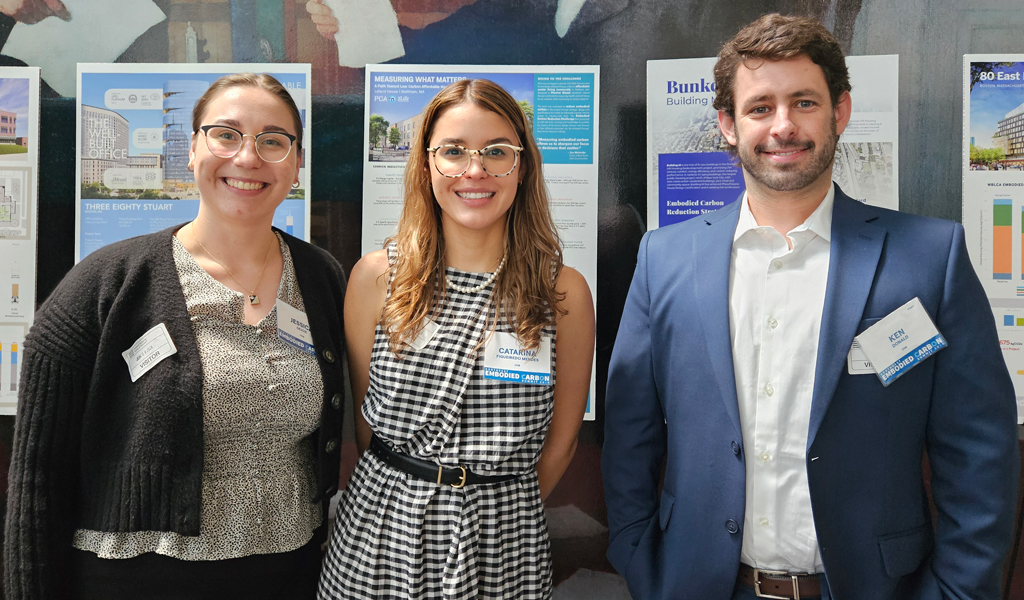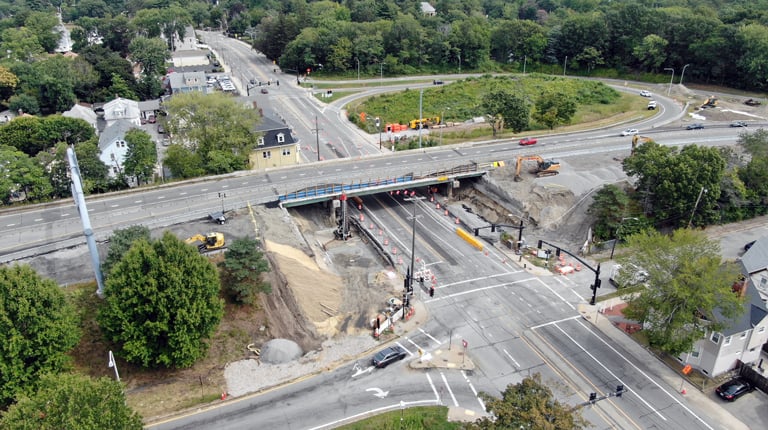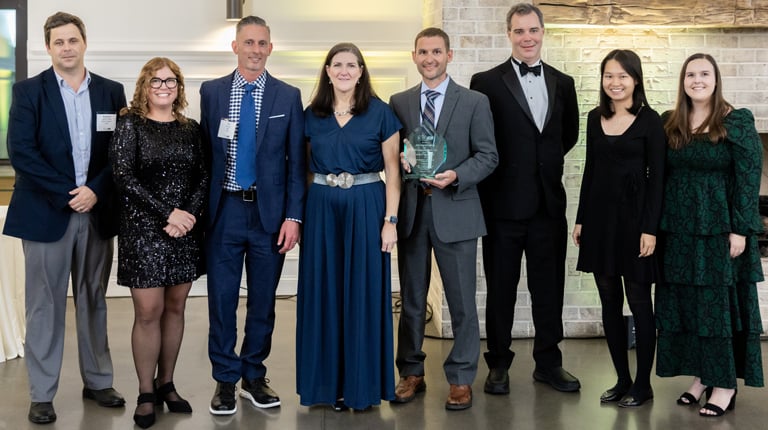
Ken joined VHB in 2023 as Senior Project Engineer and Carbon Reduction Lead, continuing the company’s focus on sustainability. With more than a decade of experience as a bridge engineer, Ken leverages his unique, forward-looking focus on carbon reduction to help advance the decarbonization of projects. We sat down with Ken to learn more about his role, industry leadership, and what’s next for advancing carbon reduction strategies.
VHB: Tell us about your role at VHB, particularly as Carbon Reduction Lead, which is a new role for the company.
Ken: My background is in structural engineering, and my experience includes bridge design and rehabilitation, load rating, and bridge and tunnel inspection. About five years ago, I began learning about embodied carbon and the huge impact materials like steel, concrete, and asphalt have on worldwide greenhouse gas (GHG) emissions. Because those are the primary materials used in design of transportation structures, I wanted to find ways to make designs more sustainable. Part of my role as Carbon Reduction Lead is to increase awareness and understanding of embodied carbon, ultimately focused on finding ways to measure and reduce carbon emissions on projects while balancing budgets and construction schedules.
VHB has begun integrating embodied carbon into our projects and decision-making, incorporating a Life Cycle Assessment (LCA) on several projects, including the I-89 Exit 14 Scoping Study in Vermont. The goal for this program is to seamlessly integrate carbon management strategies into our existing workflows—making certain not to overburden project budgets or staff—by giving them the tools and training to easily calculate the carbon impacts throughout the planning, design, and construction stages of a project.

VHB: Your passion for and commitment to carbon reduction extends beyond VHB. Tell us about your industry involvement in driving change.
Ken: Reducing the amount of carbon dioxide that is released into the atmosphere is a global issue, and not something that one person—or one company—can fix. To affect true change, we need to work together. Because of that, I’ve joined several groups focused on driving change in our industry. I’m part of the leadership group for the American Society of Civil Engineers (ASCE) Infrastructure 2050 team. I serve as a Technical Lead currently leading a multidisciplinary, international working group to develop a guidance document for performing LCAs, setting baselines on infrastructure projects to help the industry here in the U.S. have a standardized approach. I am also a member of the Carbon Leadership Forum – Northeast Hub, where I started and co-chair the Infrastructure Working Group. This group began in 2024 and is focused on developing strategies to help the Northeast region work cohesively and share information to reduce the embodied carbon in infrastructure. I also recently joined the Boston Society of Civil Engineers (BSCES) Sustainability Committee and authored an article on embodied carbon for their May newsletter.
This year, I’ve presented on carbon reduction strategies at the Transportation Research Board’s (TRB) Annual Meeting and Massachusetts Department of Transportation (MassDOT) Innovation Conference. In October, I will present my abstract “Balancing Carbon, Schedule, and Budget in Infrastructure” at the ASCE Convention. Participation in industry organizations helps me to learn from other leaders, grow my career at VHB, and bring best practices to our clients and communities.
VHB: What’s on the horizon for carbon reduction strategies at VHB?
Ken: Well, you can’t manage what you don’t measure, and the transportation sector has not yet adopted widespread practices for quantifying the carbon footprint of projects. By performing an LCA at the beginning of an infrastructure project, we can measure the total emission of a project by considering all the GHG emissions produced in every facet of manufacturing, transporting, and construction of each material. Ideally, we get to the point where we are performing an LCA for a project at the scoping stage and use it as a metric in determining the best alternative for that project. Then, during the conceptual design stage, we can identify the carbon “hot spots” and use familiar strategies to reduce those. I say familiar because the two major metrics a project is measured by are minimizing cost and minimizing construction time. And because upwards of 90 percent of the carbon footprint of an infrastructure project comes from the materials and their construction, we are already looking to reduce the amount of materials we use and how much time we take on site constructing it. So, the general philosophy of avoid, switch, and improve is already built into the way we approach projects; this is just applying that philosophy in a new way.
Learn more about carbon reduction strategies by connecting with Ken via email or on LinkedIn.



